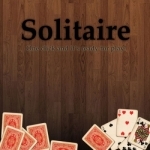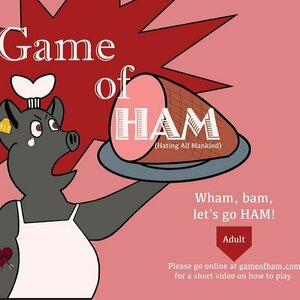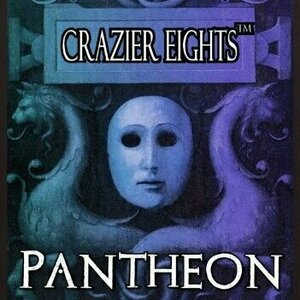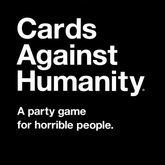Mel (490 KP) rated Exploding Kittens in Tabletop Games
Oct 1, 2019
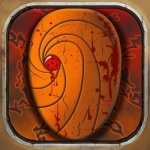
Ultimate Ninja:Fghting the fight
Games
App
《Ultimate ninja 》The plot and classic scenes of the original work is truly reproduced in the...
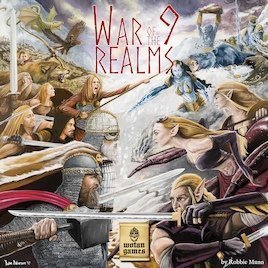
War of the 9 Realms
Tabletop Game
A tile based tactical skirmish game based on the Realms of Norse Mythology. Each realm is comprised...
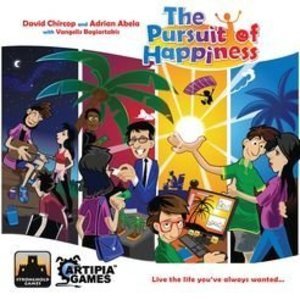
The Pursuit of Happiness
Tabletop Game
The Pursuit of Happiness is a game in which you take a character from birth and you live the life...
The Game of Life
Purple Phoenix Games (2266 KP) rated Game of HAM: Adult Set in Tabletop Games
Jul 1, 2020
Game of HAM is a card and board game similar to Apples to Apples and the dreaded Cards Against Humanity. However, HAM differs from these with the addition of the board and actual game play. Yes, each round still needs a judge player and the others to play cards based on a prompt, but after that the game becomes, well, a game. In fact, this game has a board with spaces to travel and a goal space to race to in order to determine the winner.
DISCLAIMER: We were provided a prototype copy of this game for the purposes of this review. These are preview copy components, and the final components will probably be different from these shown. Also, it is not my intention to detail every rule in the game, as there are just too many. You are invited to back the game through the upcoming Kickstarter campaign, order from your FLGS, or purchase through any retailers stocking it after fulfillment. -T
To setup, lay out the modular board pieces in any fashion you would like. We played on a boring 1×4 orientation because we lack imagination. At least at first. Next choose a color token to represent your progress along the board. Separate the colored cards into stacks and place under the corresponding giant ham tokens. Each player will be dealt 10 pink response cards and whomever is chosen to be the first judge player will draw a gray card to begin.
Game of HAM comes shipped with about a million cards and an equal number of ways to play. For this preview we played typical core games without any special rules (and we even left a “mandatory rule” out – the rulebook said we could). Seriously, the first half of the rulebook is explaining the game, and the second half is allllllllll optional gameplay styles, optional rules, variants, and so forth.
So on a turn, the judge draws a gray (grey?) card, reads it, places it on the table, and the other players will play pink (penk?) cards as responses for the judge to choose a winner. The winning player will then reference the numbers on the bottom of the gray card to determine how many spaces on the board they will travel. As the aim of the game is to get to the goal space, typically the larger number will be chosen. However, in order to win the game a player must land on the goal space exactly, so this is a reason a player may choose the lesser number.
At times players will land on colored spaces on the board. This signifies that they will draw a card of corresponding color to be used on future turns. These cards can be very powerful and affect other players as well. It is these cards along with the actual game board that separates Game of HAM from others in this vein: there is actual game play and decisions to be made aside from choosing cards that create the most lewd scenarios.
Don’t get me wrong – there ARE lots and lots of opportunities to create these scenarios and pick gross things (especially in this Adult Set), but this is not the only goal of the game. In any case, play continues in this fashion – for the vanilla game mode – until a player has reached the goal space on the board exactly. At this point, the group decides which game mode or optional rules they would like to play with next, because this game can be somewhat addicting.
Components. This is a ham-themed game and the components reflect that wonderfully. Like I mentioned earlier, there are at least a zillion cards that come in this box, and they are all great quality. I have only opened one of the several packs of pink cards that come with the game, and I am not at all joking about that. The giant colored ham tokens are awesome, the boards are acceptable, and the rulebook is wonderful. I was also not joking when I said half the rulebook is explaining the game and the other half is describing different modes of play, variants, and optional rules (there are even sections of rules for drinkers and 420-friendly players). All said, the components are great!
Now, I have said this multiple times in my reviews: I HATE Cards Against Humanity. That “game” exists for one purpose: to gross out everyone playing and as an acceptable outlet for people to be as offensive as possible. While Game of HAM is similar in some aspects, I can actually play this game and not want to quit two cards into it. I LIKE that the designers have come up with half a rulebook worth of alternate play modes and optional rules, even some that outright tell you that you can use or not use ANY rule in the book! It’s not the classiest game, of course, but you don’t purchase and play a game called “Game of HAM” for its reflection of your sophistication. You purchase and play this game because you want to have a good time with your friends and family without the need to piss everyone at the table off. I can get behind this.
If you are in the market for a CAH or Apples to Apples replacement, but still want to feel like you can be a social monster for a while, pick up Game of HAM (Adult Set). I don’t know this for fact, but I assume that since this is the “Adult Set” that there will soon also be a “Family Set” or something similar. So Game of HAM may be for you, as long as you are aware of the content within. I recommend Game of HAM for those gamers who know and are comfortable with the content as a great modular card game. I won’t be playing it with my in-laws, but I can certainly play this with my siblings!
Purple Phoenix Games (2266 KP) rated Crazier Eights: Pantheon in Tabletop Games
Aug 25, 2020
War. Old Maid. Go Fish. Crazy Eights. These are classic card games we probably all grew up playing. There have been many re-themes and new difficulty layers spread upon them to make them even more interesting. While UNO certainly has cornered the market on the Crazy Eights base, we have a new contender: Crazier Eights. Recoculous has published several versions of this card game with different themes: Camelot, Avalon, One Thousand & One Nights, Olympus, and Shahrzad. Today we are taking a preview of Crazier Eights: Pantheon.
You HAVE played Crazy Eights right? The card game where you attempt to be the first to exhaust your hand of cards, but you can only play down if you can match the suit or number on top of the discard pile? And if you can’t, you throw down an 8 as a wild and call the color to be played next? Well there you have the easy rules. Crazier Eights: Pantheon (which I will from here call C8P) holds basically the same rule-set with a few new mechanics and a theme. The win condition is still the same: be the first to exhaust your hand of cards, but to win you will need to play your hand strategically against your opponents.
DISCLAIMER: We were provided a copy of this game for the purposes of this review. This is a retail copy of the game, so what you see in these photos is exactly what would be received in your box. I do not intend to cover every single rule included in the rulebook, but will describe the overall game flow and major rule set so that our readers may get a sense of how the game plays. For more in depth rules, you may purchase a copy online or from your FLGS. -T
To setup, shuffle the large deck of cards and place the deck in the middle of the table. Flip the top card to begin the discard pile and dictate the first card play. Deal each player seven cards and you are ready to begin!
The turn structure is familiar: check for any “start of turn” effects and apply them, draw a card, play and/or discard a card, then resolve any “end of turn” effects. The deck is comprised of Events and Assets in different colors (suits) and numbers like in a typical deck of playing cards. After checking and resolving start of turn effects on Asset cards in your personal tableau, you must draw a card from the deck. This is where C8P strays from OG Crazy Eights a bit. You may play a card from your hand (Assets and Events) and discard a card to the discard pile (matching the suit/number/or an Eight), or simply play a card from your hand without discarding. Cards played from your hand can be Event cards that are played, resolved, and then discarded to the bottom of the discard pile, or an Asset card that is played to your tableau that cause chain reactions or other abilities on future turns. Next, resolve any end of turn effects from Assets in your tableau before the next player begins their turn.
Play continues in this fashion until one player has rid themselves of their hand and is crowned the Master of the Pantheon! Or at least, the winner of the game.
Components. This game is a box full of cards. The cards are good. The layout makes sense, and the art on the faces of the cards remind me of very classic art depicting ancient Grecian scenes. I am no art historian, so I do not know if they are existing art pieces or new ones crafted for this game, but either way, they are a joy to behold… if you can spend the time appreciating the art instead of tracking what cards you need to play and what effects you can chain together (that was me). Extra points to the Recoculous team for associating symbols with the different suit colors for our colorblind friends. This is something that unfortunately goes unaddressed far too often.
This implementation is the second Crazier Eights we have had the chance to try, and I can say that we really enjoyed our plays of it (we played Olympus first and will be playing Camelot soon). The game comes with many interesting and varied effects to craft an ingenious strategy, and the art is stellar. Beware of playing with AP-prone gamers, as there is a lot going on and it is more than just a skinned Crazy Eights.
The Pantheon set, specifically, seems to contain more cards that allow players to steal Assets from other players, and also cards that allow players to discard more than one card each turn. These are very interesting adjustments to our first experience of Crazier Eights, and from what we were told, Pantheon can be played as a standalone OR as an expansion to throw into any other set. There are less cards in Pantheon than in Olympus or Camelot (and the other base sets I assume), but the gameplay is the same, and is super quick.
Now having played this family of games several times, I can say that it is my favorite Crazy Eights derivative and certainly worthy of a look. If your game collection is sorely lacking in ancient Greek-themed card games, or if you want a hybrid game of old school rules with interesting twists, then do consider purchasing this or one of its predecessors.
PS – Don’t worry if, while you are playing, you have all your Assets stolen or destroyed. I have won the game with zero Assets in front of me while opponents have had eight, ironically. Assets are great, but you still need to shed your hand.
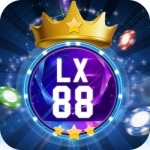
LX88 game bai, danh bai online
Games
App
LX88 – TAI GAME BAI, DANH BAI ONLINE 2018 ( TAI GAME BAI ONLINE, DANH BAI ONLINE 2018 ) la the...
Rikki Hammond (33 KP) rated Cards Against Humanity in Tabletop Games
May 28, 2019
There are some genuinely insensitive cards contained within this game, but you need to leave your morals at the door when you begin playing, and you will have some incredibly funny moments.
For those that don't know how this game plays, each player takes it in turns to read a question from the stack of black cards, and every other player picks one (or two if it's a double answer) white card from their hand of ten. Once everyone's chosen, the black card player reads everyone's white cards and picks what they think is the best response to the question. The winning player than keeps the black card, to show they won that question. If you feel you ha e a duff hand, you can trade in one of your black cards to pick up ten new white cards from the stacks.
Once everyone decides they've had enough playing, whoever has the most black cards at the end wins.
Many have tried to imitate this game, but few have succeeded, and I feel Cards Against Humanity will still be a top party game for many years to come.
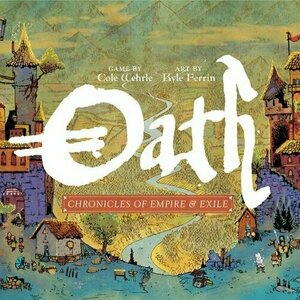
Oath: Chronicles of Empire and Exile
Tabletop Game
In Oath, one to six players guide the course of history in an ancient land. Players might take the...
